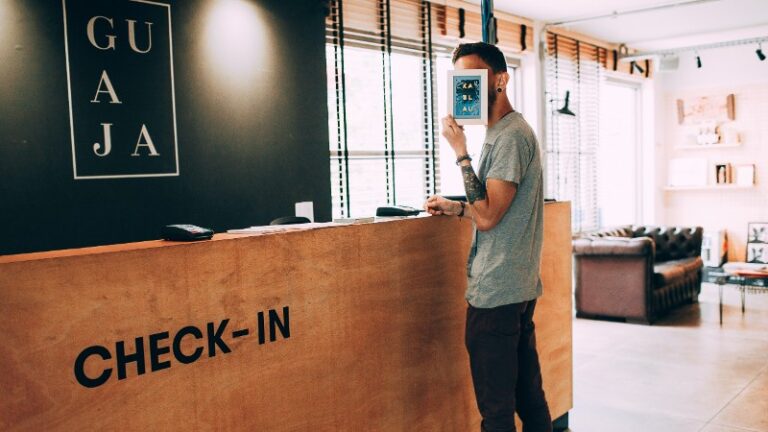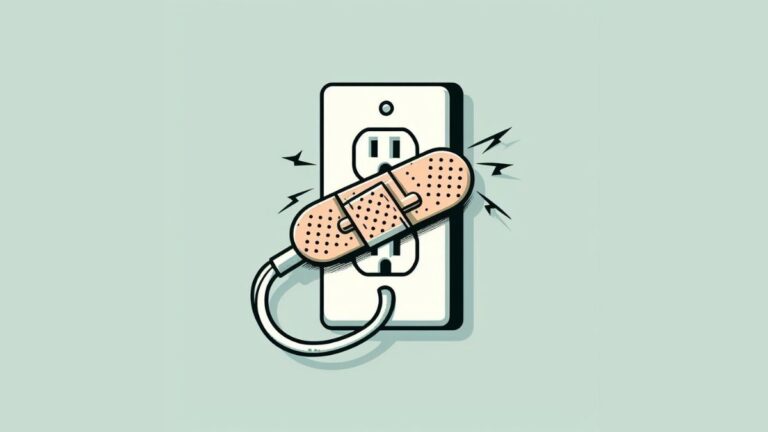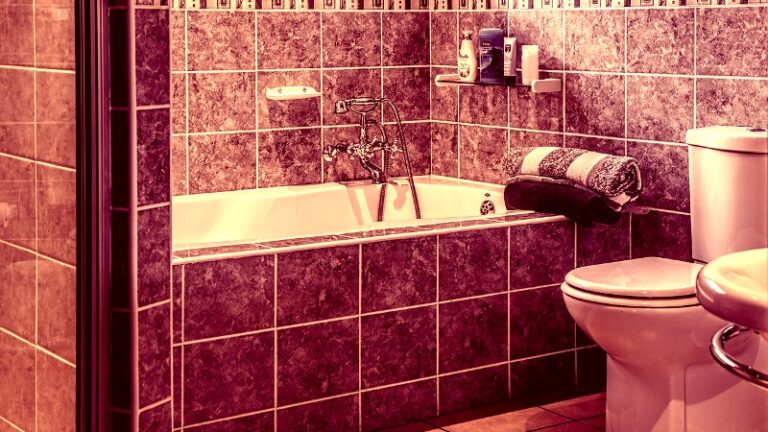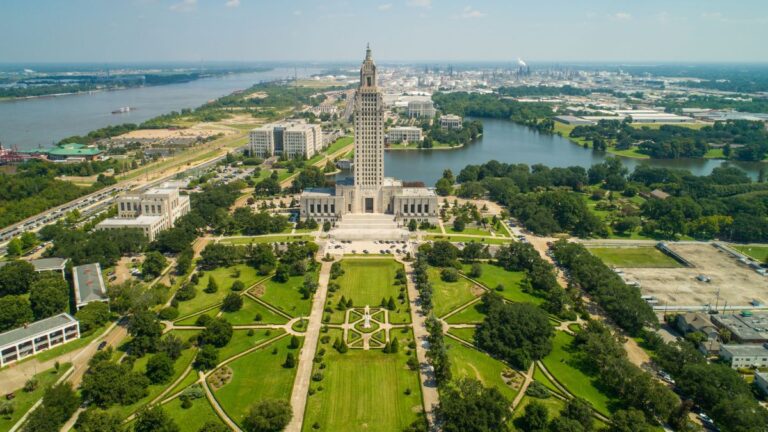What is a Lobby in a Hotel? Find Out Everything About the Heart of the Hotel
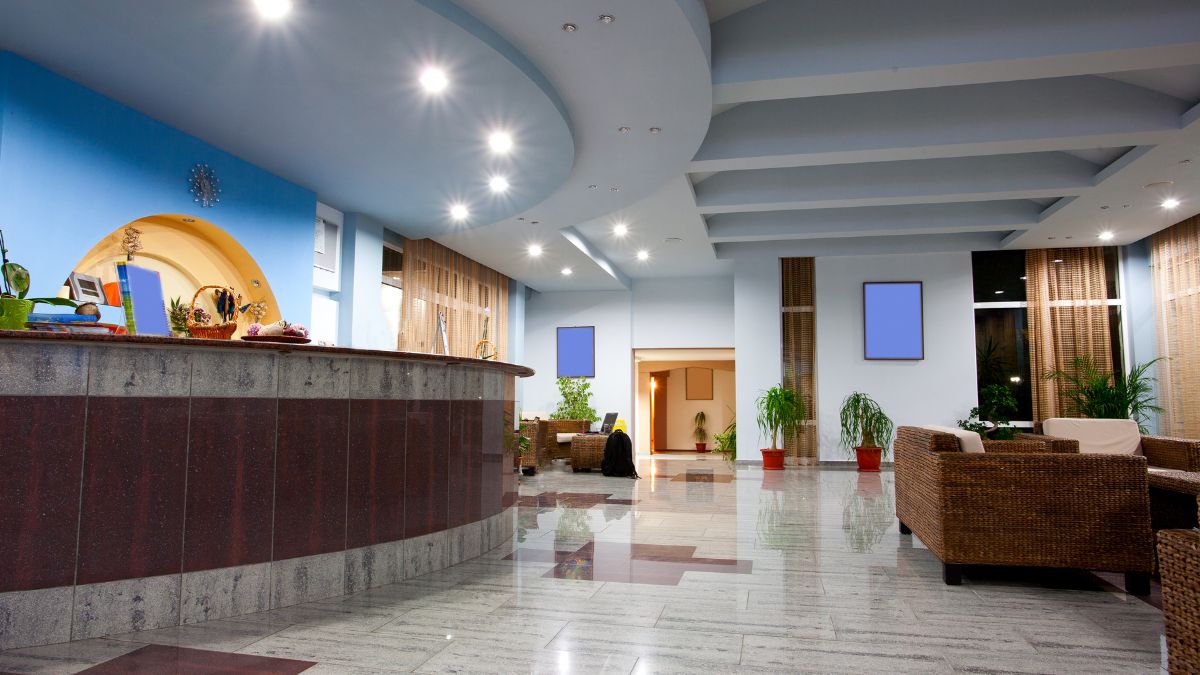
As participants in Amazon Associates and other programs, we earn from qualifying purchases. This comes at no additional cost to you. For more details, see our Affiliate Disclosure.
In the world of hospitality, the first impression often sets the tone for a guest’s entire stay. And what’s the first space they encounter? The hotel lobby. This central hub, often overlooked in its importance, is much more than just a reception area—it’s the heart of the hotel. Join us as we delve deep into understanding the significance, purpose, and nuances of the hotel lobby, and uncover why it’s truly the epicenter of a guest’s experience.
HIGHLIGHTS
- The hotel lobby serves as the initial point of interaction for guests, setting the tone for their entire stay.
- Lobbies are multifunctional spaces, blending aesthetics with key services, such as social areas, security, and amenities like cafes or shops.
- The reception is distinct from the lobby, specifically referring to the desk or area where guests are received and manage administrative tasks.
- Both the lobby and reception are crucial to the hotel’s operations, with the lobby providing ambiance and the reception managing guest services.
What is the Lobby in a Hotel?
The lobby in a hotel is the primary public space and serves as the main entrance area where guests are welcomed. It’s the initial touchpoint, setting the tone for a guest’s entire stay. Typically, it houses the reception desk, the place where visitors check-in and check-out, as well as make inquiries or address concerns.
Beyond the practicalities of reception, many hotel lobbies provide comfortable seating areas. These are spaces where guests can relax, await transportation, or have casual meetings. The design and décor of a lobby are crucial, often reflecting the hotel’s branding, theme, or cultural context, offering guests a glimpse into the hotel’s identity.
Upscale hotels might also feature a concierge desk in the lobby, assisting guests with local information, bookings, and special requests. As modern needs evolve, many lobbies now ensure connectivity, offering amenities like free Wi-Fi and charging stations.
Some hotel lobbies go a step further by integrating food and beverage outlets, such as cafes or bars, enhancing the guest’s experience. Additionally, with security being paramount, the lobby plays a pivotal role in the safety infrastructure of a hotel, often being monitored and staffed accordingly.
In essence, the lobby acts as the hotel’s heartbeat, encapsulating its core values, services, and aesthetics.
Is a Lobby a Waiting Room?
While a lobby and a waiting room both serve as spaces where people can sit and wait, they have distinct functions and are typically found in different contexts.
Lobby
A lobby is a larger, more open space, often found in buildings like hotels, theaters, and commercial structures. It’s the primary entrance or reception area where guests or visitors are initially received.
A lobby can provide a variety of functions: in hotels, it’s where guests check-in and check-out; in theaters, it might be where tickets are torn or where patrons gather during intermissions.
The design, ambiance, and furnishings of a lobby are often intended to give visitors an immediate sense of the building’s purpose or the brand’s image.
Waiting room
A waiting room, on the other hand, is a space specifically designated for people to wait for a short period before receiving a particular service or before being called into another area.
Waiting rooms are commonly found in places like doctors’ offices, clinics, railway stations, or any other place where services are rendered on an appointment or queuing basis.
The décor and furnishings of a waiting room are usually more functional and are focused on providing a comfortable space for waiting rather than making a branding statement.
While both lobbies and waiting rooms serve as areas where people can wait, a lobby is broader in function and scope, whereas a waiting room has a more specific, utilitarian purpose.
Where is the Lobby of a Hotel?
The lobby of a hotel is typically situated at the main entrance of the establishment. It’s the first area guests encounter, acting as a welcoming point when they step through the doors.
Located predominantly on the ground floor, the lobby ensures ease of accessibility for everyone. This strategic positioning facilitates seamless arrivals and departures, given its proximity to the entrance and exit points.
Inside the lobby, one usually finds the reception or front desk. Here, guests can conveniently check in, check out, or seek assistance, making their initial experience smooth and hassle-free.
The lobby’s central placement makes it the heart of the hotel, bridging various sections and guiding guests throughout their journey.
What Does a Lobby Include?
A hotel lobby, often considered the welcoming face of an establishment, encompasses various features that both serve practical needs and enhance the guest experience. These features can range from functional elements like a reception desk to aesthetic touches that set the ambiance.
- Reception Desk: This is the primary point of contact for guests, where they check-in, check-out, and can seek information or assistance.
- Seating Area: Comprising comfortable chairs and couches, this area provides guests a place to relax, wait, or engage in casual meetings.
- Décor and Ambiance: The design elements, art, lighting, and overall aesthetic of the lobby play a crucial role in setting the hotel’s tone and image.
- Concierge Desk: Especially in upscale hotels, a concierge desk aids guests with local recommendations, reservations, and special requests.
- Connectivity: Modern lobbies are equipped with free Wi-Fi, charging stations, and sometimes even small business centers to cater to guests’ digital needs.
- Food & Beverage Outlets: Cafes, bars, or snack counters in the lobby offer guests quick refreshments without venturing too far.
- Information & Direction: Directories, maps, or digital boards guide guests to other hotel amenities like restaurants, spas, or conference rooms.
- Retail Outlets: Some lobbies feature small shops selling souvenirs, essentials, or luxury items.
- Safety & Security: Surveillance cameras and sometimes security personnel ensure that the primary entrance and hub of the hotel remain safe for guests.
These elements combined ensure that the lobby remains a functional, comfortable, and engaging space for visitors throughout their stay.
How Big is a Lobby?
The size of a hotel lobby varies significantly based on the type, size, and purpose of the hotel, as well as its location and target clientele. Here’s a general breakdown:
- Boutique Hotels: In smaller, boutique hotels, the lobby might be more intimate, often blending seamlessly with other areas like a cafe or lounge. Such lobbies might range from a cozy 500 to 2,000 square feet.
- Mid-Scale Hotels: For mid-range hotels that cater to business travelers or families on vacation, lobbies might be more spacious, providing areas for informal meetings or relaxation. These might range from 2,000 to 5,000 square feet.
- Luxury Hotels and Resorts: In high-end luxury hotels or large resorts, the lobby is often a grand, sprawling space designed to impress. It’s not uncommon for such lobbies to be 10,000 square feet or even more, especially if they include large seating areas, multiple reception desks, concierge services, and perhaps even water features or art installations.
- Urban vs. Rural: Hotels in dense urban environments might have more compact lobbies due to space constraints. In contrast, resorts or hotels in more spacious rural or suburban settings might boast expansive lobbies.
- Purpose and Design Philosophy: Some hotels might intentionally design larger lobbies to serve as communal spaces where guests can work, socialize, or relax. Others might prioritize room sizes or other amenities over lobby space.
It’s also worth noting that, with evolving guest expectations and the rise of digital check-ins, some modern hotels are rethinking the traditional concept of a lobby, which might influence its size and layout in the future.
What is the Point of a Lobby?
The hotel lobby, often the first space guests encounter, serves as the welcoming face of the establishment. Its design and layout are strategic, aimed at offering a warm reception and setting the tone for the guest’s stay. Beyond mere aesthetics, the lobby’s function is multi-faceted, rooted in both the guest’s experience and the hotel’s operational needs.
At its core, the lobby houses the reception desk, acting as the primary point of contact. Here, guests handle essential processes like check-in and check-out, seek information, and receive assistance with various needs. This practical facet ensures the hotel can smoothly manage guest flow, address queries, and provide immediate service.
Beyond its operational functions, the lobby serves as a communal space. It provides areas for relaxation, informal meetings, or simply a spot for guests to regroup after a day out. The ambiance, from lighting to artwork, plays a crucial role in creating an atmosphere that resonates with the hotel’s brand and the cultural or geographical context it’s situated in.
Moreover, the lobby often integrates additional amenities, such as cafes, lounges, or concierge desks. These additions aim to enhance guest convenience, ensuring they have easy access to refreshments, local information, or specialized services without needing to venture far.
Types of Lobby in Hotel
Lobbies in hotels can vary widely in design and functionality based on the hotel’s size, target market, location, and overall brand concept. Here’s a look at some of the different types of hotel lobbies:
Standard Lobbies: Found in most mid-range hotels, these lobbies primarily house the reception desk and a basic seating area. Their design is functional, catering to the essential needs of guests for check-ins, check-outs, and brief waiting periods.
Boutique Lobbies: These lobbies are characteristic of boutique hotels. They are often smaller but are uniquely designed to reflect a specific theme, era, or cultural context. The emphasis here is on creating a distinct, memorable ambiance that aligns with the hotel’s overall branding.
Luxury Lobbies: Seen in high-end hotels and resorts, these lobbies are grand and expansive. They often feature opulent design elements, from lavish furnishings and artworks to chandeliers and water features. The focus is on creating an impressive entrance that exudes luxury and sophistication.
Residential Lobbies: Some hotels, especially those offering extended stays or residences, might have lobbies that feel more like upscale living rooms. They offer a cozier, homier ambiance with features like fireplaces, bookshelves, and more personalized decor.
Interactive or Social Lobbies: Modern hotel chains, especially those targeting younger demographics, are adopting lobbies designed to be communal spaces. They often incorporate cafes, bars, workstations, and lounge areas, encouraging guests to socialize, work, or relax in a shared environment.
Eco or Natural Lobbies: Found in eco-resorts or hotels with a sustainable theme, these lobbies emphasize natural elements. They might incorporate indoor plants, water bodies, natural wood, and stone, creating a tranquil, nature-connected atmosphere.
Business Lobbies: Hotels catering predominantly to business travelers might design their lobbies with a corporate touch. While they ensure comfort, such lobbies might have dedicated business centers, meeting pods, and tech amenities to facilitate work on the go.
Themed Lobbies: Some hotels, especially those in tourist-heavy areas or resorts, might have lobbies that adhere to a specific theme, be it nautical, historical, futuristic, or any other.
The type of lobby a hotel adopts depends on its strategic goals, the kind of guest experience it aims to provide, and the brand’s overarching narrative. Regardless of the type, the lobby remains an essential space, shaping first impressions and setting the tone for a guest’s stay.
Functions of Lobby in Hotel
The hotel lobby, often referred to as the heart or face of the hotel, carries numerous functions that are pivotal to the overall guest experience and the hotel’s operations. Here’s an exploration of its multifaceted roles:
Welcoming Point: The lobby is the first space guests encounter upon entering a hotel. Its ambiance, design, and functionality play a crucial role in setting the tone for a guest’s stay, offering an immediate sense of what the hotel represents and the kind of service they can expect.
Reception and Check-in/out: One of the primary practical functions of the lobby is to house the reception desk. This is where guests check-in upon arrival, check-out before departure, and seek assistance or information during their stay.
Guest Services: Beyond just check-ins and check-outs, many hotel lobbies have a concierge desk or a dedicated service area. Here, guests can get assistance with things like local tour bookings, restaurant reservations, transportation arrangements, and general local recommendations.
Seating and Waiting Area: Lobbies provide comfortable seating areas for guests to rest, await transportation, meet visitors, or even hold casual meetings. These areas are often designed for relaxation and may come equipped with reading materials, TVs, or other forms of entertainment.
Information Hub: Many lobbies display brochures, city maps, event calendars, and digital boards offering information about local attractions, ongoing events, hotel amenities, and other essential details to acquaint guests with their surroundings.
Social and Networking Space: Modern hotel lobbies are evolving into vibrant social spaces. They encourage interactions among guests, offering communal tables, lounge areas, and sometimes even events or performances that foster community building.
Food and Beverage Services: Some hotel lobbies integrate cafes, bars, or snack counters, allowing guests to grab a quick bite, have a coffee, or relax with a drink without the need to leave the hotel’s premises.
Retail and Shopping: In upscale hotels or resorts, lobbies might house small boutiques or retail outlets where guests can purchase souvenirs, luxury goods, or essentials.
Security and Surveillance: Given that the lobby is the main entrance and exit point, it’s also a hub for security. Surveillance cameras are often present, and there might be security personnel stationed to ensure the safety of the guests and the premises.
Transition and Guidance: The lobby also serves as a transition space, guiding guests to other areas of the hotel like rooms, restaurants, conference halls, or wellness centers. Clear signage and directions in the lobby ensure guests can navigate the hotel with ease.
The hotel lobby is a dynamic space, blending aesthetics with functionality. It acts as a comprehensive service hub, ensuring guests’ needs are met from the moment they step into the hotel.
Importance of Lobby in Hotel
The hotel lobby serves as the gateway to the entire establishment, offering guests their first impression. This initial encounter sets the tone for the guest’s stay, and a well-designed, inviting lobby can elevate their overall experience. It’s not just about aesthetics; the ambiance, from lighting to furniture, conveys the hotel’s brand and ethos.
Functionally, the lobby is a critical operational hub. It houses the reception desk, where guests handle pivotal processes like check-in and check-out. This space ensures a smooth flow of guest traffic, streamlining administrative tasks while being the primary point of contact for guest queries and assistance.
Moreover, lobbies are evolving into more than just transit spaces. They’re becoming vibrant social arenas, fostering interactions among guests. Modern hotel lobbies often blur the lines between relaxation, work, and socialization, offering areas for each purpose. Whether it’s a traveler catching up on work or families lounging before a day out, the lobby caters to diverse needs.
Furthermore, the lobby plays a key role in security. Being the primary entrance and exit point, it’s central to monitoring and ensuring the safety of guests and staff alike. A secure lobby provides peace of mind, assuring guests that their well-being is a priority.
The importance of a hotel lobby cannot be understated. It’s a multi-functional space, blending aesthetics, hospitality, service, and security, all while setting the stage for a memorable hotel experience.
What is the Difference Between Lobby and Reception?
The terms “lobby” and “reception” are often used interchangeably when discussing hotels, but they have distinct roles and characteristics.
The lobby is the spacious entrance or waiting area of a hotel. As the first point of interaction for guests, it sets the tone for their stay. Often designed with aesthetics in mind, it offers comfortable seating, ambient lighting, and decorative elements to create a welcoming atmosphere. Lobbies might also include amenities like cafes, lounges, or shops, and serve as a central hub connecting various parts of the hotel.
On the other hand, the reception refers specifically to the desk or area where guests are received. It’s the operational heart of the hotel’s front-of-house services. This is where guests check in and check out, make payments, and seek assistance regarding their stay. Staffed by receptionists or front desk personnel, this area manages reservations, room assignments, and other administrative tasks.
In essence, while the reception is an integral part of the lobby, the lobby itself is a broader space encompassing various functions and areas within a hotel.

